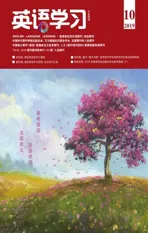Peking/Beijing Opera京剧
2019-03-03
There are more than 360 regional branches of traditional opera in China.Known as the national opera of China,Peking Opera is the most influential and representative of all the traditional operas in China.
History
Although it is called Peking Opera,it didn’t originate in Beijing but in the provinces of Anhui and Hubei.It is believed that Peking Opera came into being after 1790 when the four most famous opera troupes1from Anhui Province paid a visit to Beijing.Based upon traditional Anhui Opera,Peking Opera has also adopted repertoire2,music and performing techniques from Kun Opera (昆曲) and Qinqiang Opera (秦腔) as well as traditional folk tunes.It took in the best from each opera and eventually formed its own highly stylized music and performing techniques.
Features
Peking Opera is a combination of music,dance,art,acrobatics3,and martial arts.With its beautiful paintings,delicate costumes,and graceful gestures,Peking Opera has developed into a comprehensive art system.
With many elements of Chinese culture,Peking Opera presents the audience with an encyclopedia of Chinese culture.Its repertoire includes historical plays,comedies,tragedies and farces4.
Music
Peking Opera features5an orchestral6and percussion7band.The orchestral band frequently accompanies peaceful scenes while the percussion band provides the right atmosphere for battle scenes.The band usually sits on the left side of the stage.It works together with the actors by adding the right mood to the action on the stage.
Characters
Traditionally,women in China were forbidden to enter theatres,so all Peking Opera characters were played by men.But now,women enjoy equal rights with men on the stage,and more women are appearing on the Opera stage than ever before.
Characters in Peking Opera are basically divided into four types of roles:sheng (生the positive male role),dan(旦the positive female role), jing (净the face-painted male role),and chou(丑 the clown or the negative character).They are further classified by age and profession.Every type of role has its own facial makeup and costume,so that the audience can easily figure out the identity of the character the moment it appears on the stage.
Facial Makeup
The facial makeup of Peking Opera highlights and exaggerates8the principal features of the characters.One major characteristic of Peking Opera is the colors painted on the face of a character.It is vital to the understanding of a play.This is a feature unique to Chinese operas.
Makeup helps to transform actors into characters.Face paints are widely used.Red symbolizes uprightness and loyalty,white represents evil or cunning,and black stands for honesty and integrity9.In Peking Opera,the jing is a face-painted male role.The chou is a male clown,whose bridge of nose and eyes are marked with white powder.
Costumes
Peking Opera costumes are called xingtou (行头) which are made from silk,satin10and crepe11.Costumes of the actors and actresses represent the rank of the characters.Red is the main color for high rank characters.The characters of virtue also wear red.Lower ranking officials wear blue,etc.Beautiful decorations such as flowing sleeves and wings attached on the helmet or hats give value to detailed choreography12in Peking Opera.
Performance Skills
The main performing skills of Peking Opera are singing,reciting,acting and martial arts (唱、念、做、打) .The operatic dialogues and monologues are recited in Beijing dialect13,and some of the words are pronounced in a special manner.That is why every Peking Opera performance is accompanied with subtitles14in Chinese and English.Performers,in addition to singing,use well-established movements,such as smoothing a beard,adjusting a hat,jerking15a sleeve,or raising a foot,to express certain emotions and meaning.Opening a door,walking at night,rowing a boat,eating,drinking,etc.,are all demonstrated by stylized movements of the actors and actresses.Performers also use their eyes and facial expressions to convey specific meanings.
Notes
1.troupe n.戏班子;剧团
2.repertoire n.曲目;剧目
3.acrobatics n.杂技
4.farce n.滑稽剧;笑剧
5.feature v.以……为特色;n.特征,特色
6.orchestral adj.管弦乐的
7.percussion n.打击乐
8.exaggerate v.夸张
9.integrity n.诚实;正直
10.satin n.绸缎
11.crepe n.绉绸
12.choreography n.编舞;舞蹈艺术
13.dialect n.方言
14.subtitle n.对白的字幕
15.jerk v.猛扔;急抽
